3.2 Shoots
Learning objectives
By the end of this lesson you will be able to:
- Identify unique external features of shoots that distinguish them from roots.
- Locate the regions of origin for stems, branches, leaves, and inflorescences.
- Locate the regions of origin for stolons and rhizomes.
- Describe ways in which stolons and rhizomes are anomalies.
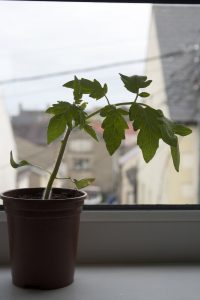
Shoots: Not only what’s above the soil
While it’s generally true that the shoot of a plant is the part above the soil, there are exceptions; these will be explored below.
A shoot is made up of a central axis called the stem, and components that grow from specific places on that stem. The stem can be tall and thick in diameter, like in a sunflower, or quite compact and compressed, like in an onion, where the stem may never get above the soil surface. The stem can be rigid like a corn stalk or floppy like a watermelon vine. In each case, the stem is the central axis to which the other shoot components attach. The stem doesn’t need to be upright; it can grow horizontally.
Watch this video to see examples and parts of shoots:
Nodes and internodes
The distinguishing external feature of a stem, and of the branches that arise from the stem, is its repeated node – internode – node – internode construction. A node is the place of origin on the stem for branches, leaves, and inflorescences. Sometimes the node is slightly swollen and obvious, other times not; it depends on the type of plant. Located at the nodes are buds (a colloquial term; later we’ll call them meristems) made up of cells that, given the correct biochemical signal, will rapidly divide and grow into branches, leaves, or inflorescences. More than one bud can grow from a node, so a node can support several structures.
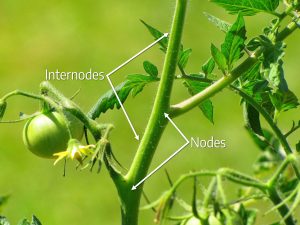
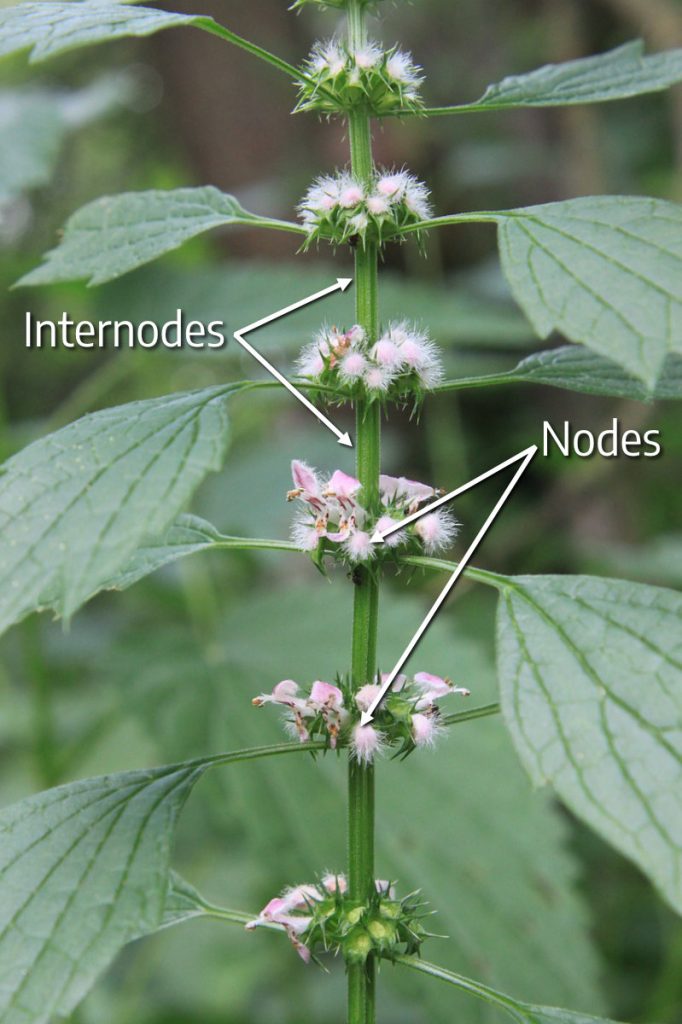
In another chapter we will see how the plant stem has internal bundles of “pipes” that make up the vascular system through which water, nutrients, sugars, and other plant metabolites flow. At the nodes, some of these pipes diverge from the main bundle to provide nutrients, water, sugars, and other metabolites to the branches, leaves, and inflorescences that form at the node.
Between nodes are stretches of stem called internodes. One architectural function of the internode is to spatially orient the leaves, branches, and inflorescences. Long internodes, for example, will spread the leaves out along a stem so that they aren’t shading each other as much as if the internodes were short. Nodes also help with leaf orientation.
The location of nodes determines whether the leaves are located, which is called leaf arrangement, and leaf arrangement is a characteristic of a particular type of plant.
- Alternate — the leaves are attached at nodes on alternate sides as they go up the stem.
- Opposite — the leaves grow directly opposite each other on the stem.
- Whorled — the leaves are oriented in a whorled formation in which their point of attachment appears to spiral up the stem.
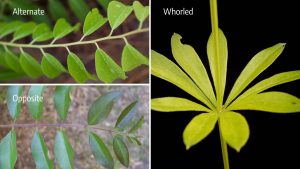
Nodes are important because they are where leaves, branches, and inflorescences originate; the internodes are important because their length has a profound impact on plant architecture.
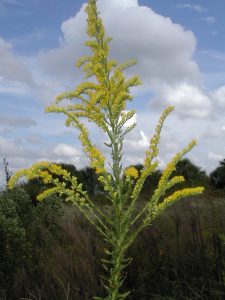
With inflorescences, it can be difficult to tell where the stem stops and the inflorescence begins. One difference is that the stem has nodes and internodes, while the inflorescence does not.
What about vines?
Watch this video showing shoots, nodes, and internodes on vines.
What about grasses?
Take a look at this video to see node/internode structure on grasses. (Note: You can ignore the mention of a Wednesday class. This video is also used in an in-person class.)
What about trees?
In this video, you’ll see nodes and internodes on trees.
More about meristems
Watch this video to take a closer look at meristems.
The tip of the stem is called the apex, and the bud at the tip is called the apical bud, or apical meristem. In the image below, a bud has formed at the apex of the stem. This bud contains a meristem that will “break” or become active next spring and result in early season stem growth.
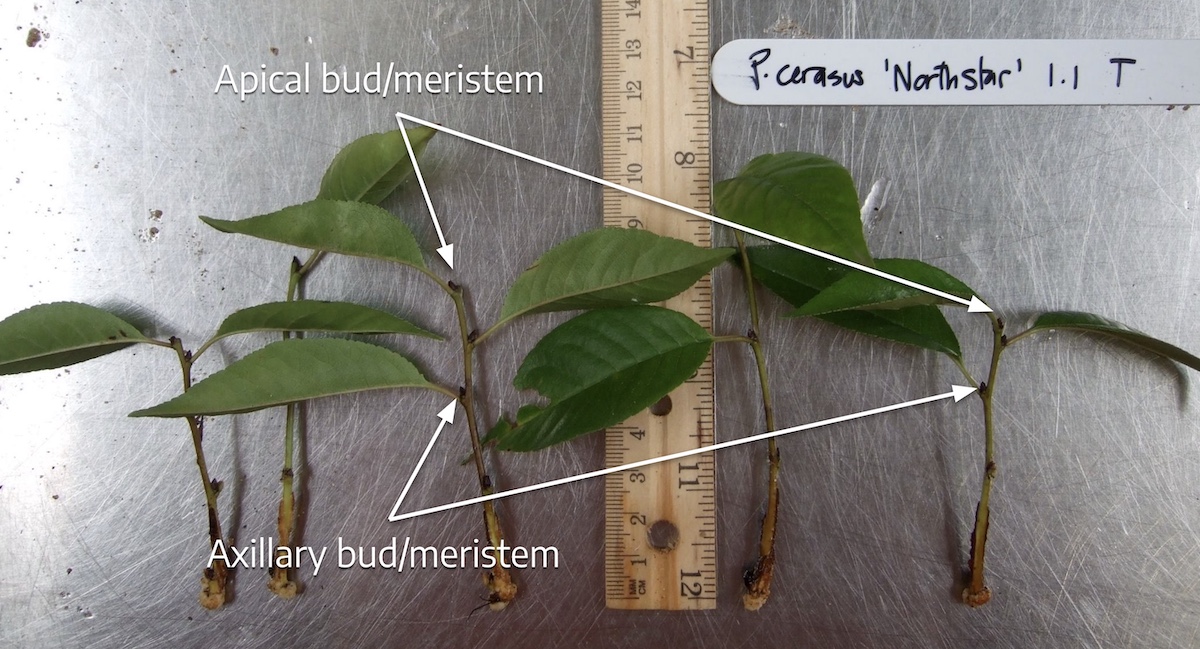
The crotch formed between the leaf petiole (the stalk that attaches the leaf blade to the shoot stem) and the stem or branch is called the leaf axil, and the buds in that crotch are called axillary buds or axillary meristems. You can see two sets of axillary meristems in the image. If pruned above the axillary buds, the plant will grow from these nodes. Removing the apical meristem is one way to encourage branching. If you’ve ever grown basil, you know that snipping or pinching leaves off right above a node encourages more leaves to grow from that node. This function also gives plants a way to respond to feeding damage or injury by having dormant buds that can grow when prompted.
Review questions
- Looking a photo of a plant, can you identify the stem, nodes, and internodes?
- Can you recognize different types of leaf arrangements on different plants you see?
- Buds at the nodes can develop into one or more of three different structures. What are these three structures?
- What type of buds are found in the crotch between the leaf petiole and the stem?
Stolons and rhizomes
Stolons
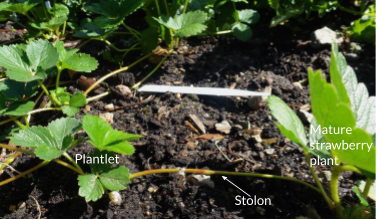
Some types of plants produce branches from nodes on the stem that are very close to, or right at, the soil surface. These branches, which have long internodes and lie on the surface of the soil, are called stolons. Not all plants produce stolons, but strawberry is a common example of a plant that does. The “runners” that extend out from the mature strawberry plant are in fact stolons. Stolons have the same typical repeating node/internode structure of a stem, but unlike other branches of the plant, at the nodes of the stolon, adventitious roots can form. Adventitious roots are roots that emerge from the stem rather than from roots. Even though they emerge from the stem above ground, they still act like roots. They anchor the stolon to the ground and absorb water and nutrients for the plant’s use. Leaves, and even branches, can also form from the stolon nodes.
One of the main purposes of stolons is to propagate a plant. The mature strawberry plant sends out a stolon and a new plantlet forms at the stolon node. Once the plantlet is rootedm you can cut the stolon internode between the plantlet and the main stem and transplant the plantlet. For instance, you can start a new patch of strawberry plants by cutting off these plantlets and planting them in a bed.
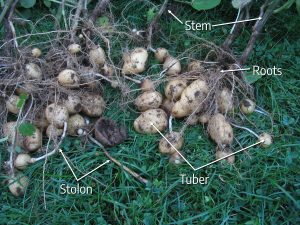
Potato is another plant that produces stolons; in this case the stolons are often below ground rather than above the soil. Potato tubers (the part that we eat) are formed from swellings of these stolons. When we grow potatoes we mechanically hill soil up around the potato stem during the growing season to cover the developing tubers, preventing them from turning green and bitter from exposure to sunlight.
Rhizomes
Rhizomes are another type of stem tissue originating from a node. In this case it is typically a node that is below the surface of the soil. A rhizome also grows horizontally and has nodes and internodes, but unlike stolons, it is underground. The ginger in the produce section of the grocery story is misnamed ginger “root,” but is actually a rhizome, and you can tell that this is stem tissue because it has nodes and internodes. The nodes are the faint, slightly raised rings around the circumference of the rhizome. If you see nodes and internodes on a plant part, the tissue is stem tissue and not root tissue, even if it is underground.
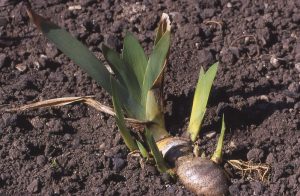
Rhizomes and stolons are the exceptions to the general notion that shoot tissue is above the soil surface. They are branches, complete with nodes and internodes, but are underground (rhizomes) or near the soil surface (stolons). They are stem tissue.
Turfgrass provides an example of rhizomes, stolons, and another structure typically associated with plants in the grass family called tillers. Here is an optional reading about those structures in turfgrass.
This video describes and shows an example of rhizomes.
Review questions
- What is the term for a horizontally growing stem that is near to or on the soil surface, and that can form adventitious roots at its nodes?
- What is the term for an underground, horizontally growing stem?
- What is one of the main purposes of stolons?
- What type of tissue are rhizomes, stolons, and tubers? Stem tissue or root tissue?
Stem region of a plant where one or more leaves attach and is the location of lateral buds.
Complete flower structure of a plant and includes the flower, pedicle, rachis, and peduncle.
Group of continuously dividing cells; also called a bud.
Stem region between nodes in plants.
Tip of the stem.
Bud located on the tip of the stem.
Group of more or less continually dividing cells located at the tip of a shoot or root.
Upper angle between a leaf petiole and the stem to which it is attached.
Bud borne in the axil of a stem.
Group of more or less continually dividing cells located at the axils of a stem.
Stem with long internodes that grows along the surface of the ground.
Tissue arising from an organ other than expected.
Roots that emerge from the stem rather than roots.
Swollen, underground, modified stems that store food.
Horizontal stem growing just below the soil surface.

